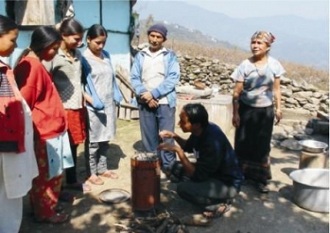On December 13, 2012, the journal Lancet published the Global Burden of Disease Study 2010. The Global Burden of Disease Study 2010 (GBD 2010) is the largest ever systematic effort to describe the global distribution and causes of a wide array of major diseases, injuries, and health risk factors. GBD 2010 consists of seven articles, each containing data on different aspects of the study (including data for different countries and world regions, men and women, and different age groups).
The last of the seven articles reports the comparative risk assessment among about 60 risk factors, including household air pollution. It can be cited as:
A Comparative Risk Assessment of Burden of Disease and Injury Attributable to 67 Risk Factors and Risk Factor Clusters in 21 regions, 1990-2010: A Systematic Analysis for the Global Burden of Disease Study 2010. Lancet, 380: 2224-60, 2012. S Lim, et al. (Link) (Download is free but registration is required)
Below are selected excerpts from a summary of the article by Kirk Smith of the University of California-Berkeley, a WASHplus project resource partner. A video of Dr. Smith’s presentation about the GBD study is also available.
————————————————————————-
As chair of the skilled and dedicated expert group on Household Air Pollution (HAP), I here summarize four aspects of the assessment related to HAP:
First the numbers. The scale of HAP’s health impact is quite large.
- 3.5 million direct premature deaths annually in 2010 – compared to 3.3 million for outdoor air pollution (particles and ozone) and 6.3 million for active and passive smoking
- 0.5 million more from the outdoor air pollution due to household fuels — what one might call “secondhand cookfire smoke.”
- This makes ~4 million total attributable to HAP from cooking fuel.
- 0.5 million of the total are child pneumonia deaths.
- The rest are adult deaths (men and women) from lung cancer, cardiovascular disease (CVD), and COPD. Cataracts are also included, but they cause very few deaths.
- In terms of absolute impacts, men are more affected than women. This counterintuitive result is because men have so much higher background rates of the major diseases. Thus, although women have higher exposures and higher elevations in risk for these diseases, men end up with the larger burden. In relative terms, as indicated below, however, women are more affected by HAP.
- In terms of DALYs (lost healthy life years), HAP is the 2nd most important risk factor for women and girls globally among those examined and 5th for men and boys. It is 1st for both sexes in South Asia and for women and girls in most of sub-Saharan Africa. HAP is 6th for both sexes in East Asia.
- HAP is the most important single environmental risk factor globally and in poor regions. Behind outdoor air pollution (OAP) in richer countries, of course, and in China, where OAP ranks fourth among all risk factors examined.
- 2.8 billion people rely on solid fuels for their main cooking fuel in 2010, a number that seems to have been roughly stable globally for the last decade or so. This is now more people than anytime in human history relying on solid fuels for cooking.



